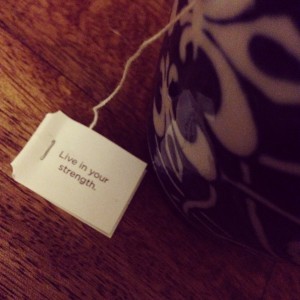 I have a gremlin that always says, “But it’s just so hard…”. Maybe this gremlin never aged past 15. Or maybe she’s just a whiner. Either way, she sees everything as arduous and pretty near impossible to do.
I have a gremlin that always says, “But it’s just so hard…”. Maybe this gremlin never aged past 15. Or maybe she’s just a whiner. Either way, she sees everything as arduous and pretty near impossible to do.
Like now, the holidays are over and my goals are more or less set for 2015. I know where I’m headed and what I want to feel at the end of this year, but I find that gremlin’s voice cropping up an awful lot this week. “Oh, that will never work. It’s impossible. Where would you even start?”
But things are rarely as hard as I think they are.
And they are almost never as hard as she says they are.
AND… I’ve learned that I can make things much easier if I just plan ahead a little.
We’re not talking about big, detailed plans for the next however-many months. We’re just talking about thinking a little bit ahead (as in what’s the next step?).
Stuff like…
- Setting out my workout clothes before I go to bed so that when I wake up at 6:30am to go to the gym, I don’t have to think about what to wear or dig through my closet in the dark (because my husband is still asleep). It makes it easier to just get up and go.
- Cooking a little extra for dinner so I’ll have a healthy lunch tomorrow. This helps me avoid eating what’s easy (which is usually some sort of cheesy-bready-gutbomb).
- Taking 5 minutes at the end of the work day to write out my ToDo list for tomorrow. This helps me stay on track and when I wake up, I have a general idea of what the day will bring. It’s also a way for me to stay connected to my goals by taking the time to check in… even just for 5 minutes.
These are small things, but it all matters.
How you start your day will affect how you feel all day long. What you eat affects your energy and clarity. Whether you exercise or not. If you take time to prepare for the day, week, month… it all adds up.
Just like skipping workouts and eating whatever is easiest can accumulate into weeks of lazy and pounds of unwanted blah. Making that extra little effort to help things go right can become healthy good habits and a smaller jean size.
This idea of setting yourself up for success works for business and leadership goals as well.
It’s like packing for a road trip. You could just pack a change of clothes and your wallet and hop in the car. But generally, the ride will be more pleasant and easier if you take a few minutes to plan out where you’re headed and maybe grab a few snacks and some tunes.
You don’t have to have every turn memorized, but knowing where you need to turn next is really helpful. The same is true when navigating toward your goals.
So with that in mind, how can you set yourself up for success? (both big and small)?
- What little shifts can you make in your routine to make it flow more smoothly?
- What barriers could you lower for yourself?
- What’s the next thing that needs to happen for your goal, and what can you do now to help it go right?




